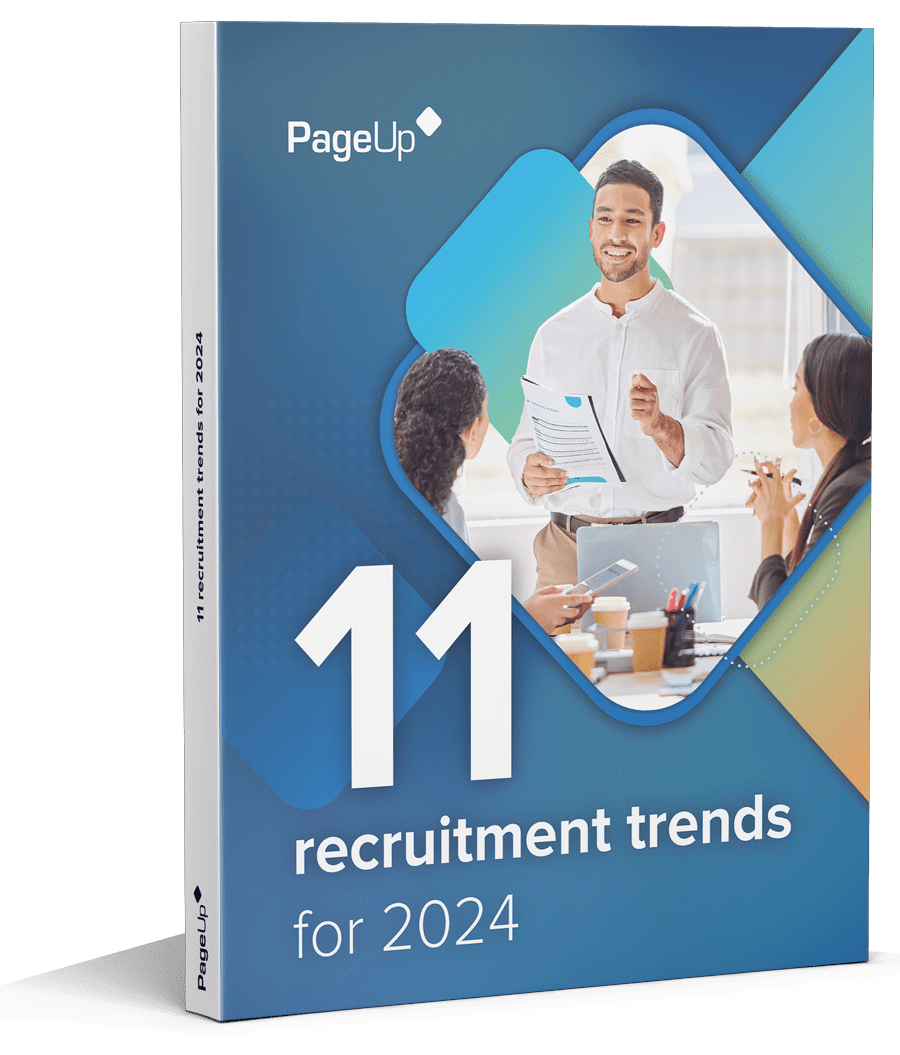The way organisationsorganizations structure their Human Resources (and other enterpriseenterprize) technology has constantly evolved. Over the years, some organisationsorganizations moved away from best-of-breed technology stacks to whole-of-suite EnterpriseEnterprize Resource Planning (ERP) software, choosing to abandon software designed for specific purposes (including payroll, recruiting, finance, purchasing, manufacturing and distribution) in favour of a platform that claimed to provide one solution for everything.
The promises of ERP: greater simplicity and economies of scale, came at the cost of the sophisticated functionality and resulting benefits specialty best-of-breed software offered.
Enter Postmodern ERP – which combines the best of both worlds. SpecialisedSpecialized best-of-breed software can now be seamlessly integrated and accessed via one easy-to-use experience.
Savvy organisationsorganizations have realisedrealized that by adopting postmodern ERP, they can achieve the unified experience and ease of data flow promised by ERP, with the specialisedspecialized functionality of a best-of-breed tech stack. Tal Rotbart, Chief Information Officer at PageUp has seen the evolution over the years. “Smart organisationsorganizations are going down the path of postmodern ERP to solve their key business problems, as many are discovering that traditional ERPs on their own do not effectively solve them,” he says.
“Smart organisationsorganizations are going down the path of postmodern ERP to solve their key business problems, as many are discovering that traditional ERPs on their own do not effectively solve them.”
Key terms explained
Best of Breed:
A technology solution made up of different vendors to obtain the best offering for each application area. For example, enterprisesenterprizes may purchase different technology solutions for leave and payroll, rostering, recruitment, learning, performance, video interviewing and reference checking – and that’s in HR alone. As Gartner states in their definition: Although enterpriseenterprize resource planning (ERP) vendors offer numerous enterpriseenterprize applications and claim that their integrated system is a superior solution, all modules in an ERP system are rarely best-of-breed.
Traditional ERP:
EnterpriseEnterprize Resource Planning (ERP) is hallmarked by the ability to deliver a variety of business technology applications through one platform. One ERP tool can be used by departments across the organisationorganization, for example: finance, human resources, distribution, manufacturing and procurement. In a perfect world, ERP solutions deliver cost and efficiency savings and provide businesses with the insights they need to innovate. In reality, ERP solutions often lack the specialisedspecialized functionality required by individual business units and hinder an organisationorganization’s ability to save time and money. As Gartner states in their glossary definition: ERP deployments tend to come at a significant price, and the business benefits are difficult to justify and understand. Look for business benefits in four areas: IT cost savings, business process efficiency, as a business process platform for process standardization and as a catalyst for business innovation. Most enterprisesenterprizes focus on the first two areas, because they are the easiest to quantify; however, the latter two areas often have the most significant impact on the enterpriseenterprize.
Postmodern ERP
Postmodern ERP brings together best-of-breed technology solutions with appropriate levels of integration so that organisationsorganizations can benefit from the process and data flows of ERP, with the specialisedspecialized functionality of best of breed technology. As more and more HR technology vendors have their own marketplaces where you can mix and match a stack of HR tech solutions to service your unique use cases, it’s more time and cost effective than ever to achieve a postmodern ERP solution. The Gartner glossary definition focuses on a broader view across departments: Postmodern ERP is a technology strategy that automates and links administrative and operational business capabilities (such as finance, HR, purchasing, manufacturing and distribution) with appropriate levels of integration that balance the benefits of vendor-delivered integration against business flexibility and agility.
Traditional ERP v Postmodern ERP
Despite the objections of individual teams (especially HR) to all-in-one ERP solutions being implemented because they simply don’t have the functionality they need, many traditional organisationsorganizations are still enamoured with the idea of having one technology vendor solution across all of their administrative and operational needs. There are benefits to this approach – primarily that there’s one source of truth for data, one contract and one platform to manage.
The risk is that the costs (financial and otherwise) of having an all-in-one solution that isn’t fit for purpose can be significant.
- When teams aren’t enabled with the most relevant and current software available for their discipline, time and money is wasted filling the gap. “Key business problems that require deep expertiseexpertize to solve them (such as effective talent acquisition and management at scale) aren’t solved effectively by ERP solutions,” says Rotbart.
- There’s also a significant risk of team members leaving their employer to work somewhere else – where their day isn’t interrupted by enraging software that doesn’t empower them to succeed. A sushi chef can cut a fish with a spoon if they try, but you’d be far better off handing them a set of sharp knives.
In an HR context, technology that isn’t fit-for-purpose doesn’t just impact the HR team. People leaders, C-suite executives and candidates and employees are frustrated by a sub-par experience. Whether it’s an inability to automate a variety of workflows for different cohorts, difficulty accessing meaningful analytics or a clunky application and user experience – outdated or inadequate technology impacts an organisationorganization’s productivity and employer brand.
The very reason commonly used to justify a move to traditional ERP – simplicity of a single vendor that offers everything – is the same reason that such vendors offer limited capability compared to best-of-breed. Maintaining a broader software offering (whether built in-house or acquired) mean that the research and development dollar is spread thinner, at the expense of rapid innovation and deep specialisedspecialized capability.
Simple seamless integrations
To a large extent, the advantage of Postmodern ERP as compared with the best of breed of the past comes down to advances in how easily software can now be integrated. Vendors offer marketplaces of software that already have integrations built – so in a specific discipline like recruitment you can choose from multiple resume checking, background checking, video interviewing even predictive analytics vendors. More broadly, standard methods of integration now enable suites of software to be integrated together, like talent and payroll, HRIS and rostering, providing a single source of truth benefits across platforms.
Where historically a best-of-breed approach meant managing multiple installations and multiple sources of truth, postmodern ERP delivers all the benefits of best-of-breed without the pain. This overcomes one of historic best-of-breed approaches greatest challenges. “Chief Information Officers fear long and pricey customisationcustomization projects which were the curse of old-fashioned best of breed tech stacks. Postmodern ERP is a modular approach. You can pick the module you want and it fits together like LEGO without requiring complex implementation or multiple logins,” explains Rotbart.
Postmodern ERP is a modular approach. You can pick the module you want and it fits together like LEGO without requiring complex implementation or multiple logins.
Let’s take a look at the key differences between the approaches:

*Often single vendor ERP solutions promising a single user interface and integrated solution are still comprised of multiple platforms. Some even require client to pay for internal integrations.
The right price
Whichever path organisationsorganizations choose to take, they must consider three key factors – the technology’s ability to solve business problems, its alignment with current business processes, and its adaptability for future business growth. With greater flexibility (and scalability) offered by postmodern ERP, it’s unsurprising many organisationsorganizations are gravitating towards this solution. It’s also becoming increasingly apparent that postmodern ERP is less expensive than traditional on-premise solutions: an attractive aspect for organisationsorganizations looking to save on their bottom line.
Another key factor contributing to postmodern ERP’s success is the increasing range of SaaS software delivered via the cloud. “OrganisationsOrganizations are seeing strong ROI when leveraging a stack of specialisedspecialized cloud-based SaaS solutions for these jobs that easily integrate into other cloud-based solutions,” says Rotbart.
“OrganisationsOrganizations are seeing strong ROI when leveraging a stack of specialisedspecialized cloud-based SaaS solutions for these jobs that easily integrate into other cloud-based solutions.”
Fresh insights for HR
Stay up to date with HR trends, tips and more when you sign up for our industry newsletter






